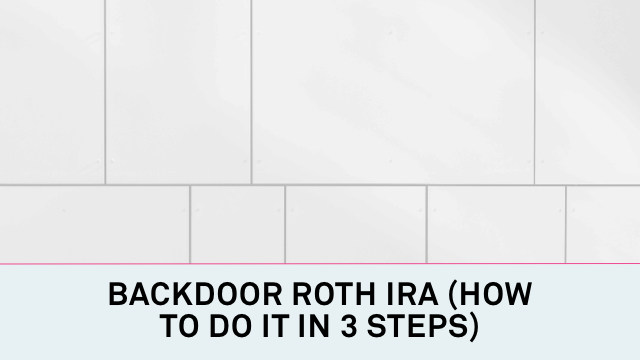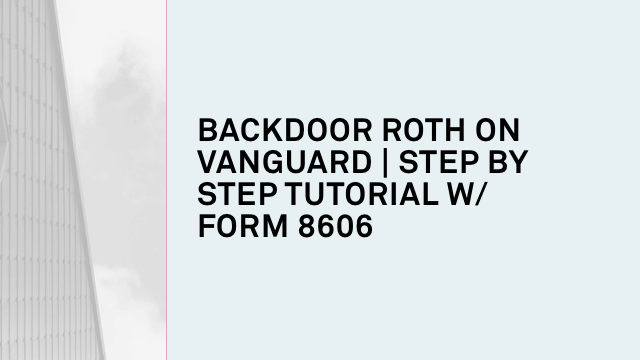Table of Contents
An increasingly popular way for individuals to invest in real estate is by leveraging their retirement accounts to do so. Many people will convert their traditional or Roth IRA to a “self-directed IRA” or SDIRA. This allows them to invest their principal contributions in an array of alternative asset classes.
Using an SDIRA, investors can diversify beyond traditional stocks and bonds. They can also invest in real estate funds or syndications, hedge funds, private equity investments, cryptocurrency, precious metals, and more.
This specific approach requires someone to have significant funds in a traditional or Roth IRA to convert to an SDIRA. Those who have a 401k or other retirement accounts through their employer are ineligible for contributing to a traditional IRA.
Those who have a modified adjusted gross income over $140,000 (or $208,000 if married and filing jointly) are unable to contribute to a Roth IRA.
The vast majority of real estate investors either a) have an employer-sponsored retirement account or b) earn too much to contribute to a Roth IRA.
Using an SDIRA, investors can
diversify beyond traditional stocks and bonds.
Yet, many investors still use a Roth IRA to invest in real estate. But how? It’s through what’s known as a “Backdoor” Roth IRA. This is something Congress has recently proposed eliminating as part of the “Build Back Better” legislation.
What is a “Backdoor” Roth IRA?
A “Backdoor” Roth IRA is not an actual account type. It is a process that investors use to otherwise skirt IRS limitations on investing in a Roth IRA.
To use a Backdoor Roth IRA, an investor must either:
- Contribute and then convert money in a traditional IRA into a Roth IRA; or
- Roll a 401k plan over to a Roth IRA (which only some companies allow).
Making investments in either traditional IRA or 401K can reduce an investors taxable income in the year they contribute to these accounts. Since these are pre-taxed dollars being invested. Once the funds are converted to a Roth IRA, the funds (both initial contributions and any subsequent earnings) will be taxed at that time.
Once the funds are converted to a Roth IRA, those funds will begin to grow income-tax-free.

In some cases, the law prohibits high-income earners from making contributions to a traditional IRA that qualifies for a tax dedication. However, they can continue to make nondeductible contributions, in which they invest using after-tax dollars.
To avoid future taxation, many high-net-worth individuals will make non-deductible contributions to a traditional IRA. Then immediately convert that account to a Backdoor Roth IRA.
This limits the amount of time the funds have to grow. If the contribution doesn’t earn any income, converting the funds through the Backdoor Roth IRA process will prevent them from being taxed. This is something that can result in major tax savings for investors.
How to Use Backdoor Roth IRA to Invest in Real Estate
Once other retirement accounts have been converted to a Roth IRA. An investor who wants to leverage their Roth IRA to invest in real estate essentially has two options.

Convert Roth IRA to SDIRA
The first option is to convert the Roth IRA to a self-directed IRA, or SDIRA. By doing this, investors gain more control over how they can make investments. Using an SDIRA, individuals can elect to invest in a range of alternative investments. Including but not limited to real estate.
Many people will use an SDIRA to invest in a real estate syndication or fund. This allows them to be hands-off, passive investors. More conservative investors may decide to invest a portion of their SDIRA into real estate investment trusts (REITs) as well as directly into real estate deals.
With a standard Roth IRA, individuals can
withdraw their principal contributions
at any point tax- and penalty-free
Withdraw funds from Roth IRA to Invest Direct
A second, less frequently used option is to withdraw funds from a Roth IRA to invest in real estate directly. However, this approach has many limitations when using a Backdoor Roth IRA vs. a standard Roth IRA. With a standard Roth IRA, individuals can take out their principal contributions from a standard Roth IRA at any time without paying taxes or penalties (but they must keep their earnings in the account until they reach a certain age, or they will face heavy taxes).

A Backdoor Roth IRA considers funds moved from a traditional IRA, 401K, or a similar plan as “converted funds,” rather than contributions. Therefore, they must be held in the Roth IRA for at least five years before they can be withdrawn penalty-free.
For investors with a long-term mindset, this second option might be viable. However, most investors typically use the Backdoor Roth IRA process to transfer funds into an SDIRA so they can reinvest in alternative assets quickly, instead of waiting for the latter option to allow it.
The Benefits of Investing in Real Estate Using a Backdoor Roth IRA
Investing in real estate through a Backdoor Roth IRA comes with many advantages. These benefits include:

More Income to Invest
Individuals who qualify to invest in a standard Roth IRA face limitations on their annual investment amount. For both 2021 and 2022, individuals can only contribute up to $6,000 per year (or $7,000 if aged 50 or older). The contribution limits to a traditional 401k and other retirement plans are significantly higher.
For example, someone who is self-employed might be contributing to a Solo 401k plan, which allowed individuals to contribute up to $58,000 per year in 2021 (and will increase to $61,000 in 2022, with an additional $6,500 “catch-up” contribution for those aged 50 or older).

No Income Limits
Unlike a standard Roth IRA, which stops people earning above a certain amount from investing. There are no income limits when investing in a Backdoor Roth IRA. This makes the Backdoor Roth IRA a great option for high-income earners.

Income Earned Tax-Free
Since the IRS has already taxed funds transferred to a Backdoor Roth IRA, any earnings will grow tax-free. If and when an investors eventually chooses to take distributions, they will also be tax-free.

No Required Minimum Distribution
Unlike other retirement plans, Roth IRAs do not have required minimum distributions once a person reaches a certain age. Therefore, a person can continue to grow their tax-deferred retirement savings for as long as they’d like without being forced to make mandatory withdrawals.
For these reasons, those who want to invest in real estate will find using a Backdoor Roth IRA very appealing. They will have more money available to invest than if they were investing through a standard IRA. Any proceeds from the real estate transaction will grow at a tax-free rate, and investors—regardless of how much money they earn each year—can use this process to invest in real estate.
Moreover, an often overlooked benefit is that using a Backdoor Roth IRA to invest in real estate, through an SDIRA or otherwise, is an excellent way for high-net-worth individuals to diversify their retirement accounts.
Investors in traditional retirement accounts, such as 401K, typically face restrictions on the types of investments they can pursue, which usually revolve around stocks and bonds. Using a Backdoor Roth IRA, people will have the opportunity to invest a greater share of their retirement savings into alternative assets like real estate.
The Proposed Elimination of Backdoor Roth IRAs
In November, the U.S. House of Representatives passed a version of President Biden’s “Build Back Better” bill that would eliminate Backdoor Roth IRA conversions. The House-passed bill prohibits all taxpayers from converting their after-tax contributions through the “backdoor” process.
This proposed change is one component of a broader initiative to reduce tax-avoidance methods aimed at the affluent. For example, an investigative report found that Paypal founder Peter Theil reportedly has a Roth IRA valued at more than $5 billion – something that would be nearly impossible to achieve without using this “backdoor” strategy.
What’s more, the Build Back Better legislation contemplates adding more stringent requirements for those who have more than $10 million or more across any defined contribution retirement account, such as IRAs and 401ks. These requirements pertain to withdrawals. Any single tax filer earning more than $400,000 per year would be required to withdraw 50% of any amount above the $10 million threshold.
Conclusion
The Build Back Better legislation is now with the U.S. Senate for consideration. The Senate is anticipated to take action, one way or another, by year-end. Whether the Backdoor Roth IRA survives past the Senate remains to be seen.
Those who have funds in a
traditional IRA, 401k or other retirement account have a narrow window left
to convert to a Roth IRA before year-end.
Those who have funds in a traditional IRA, 401k or other retirement account have a narrow window left to convert to a Roth IRA before year-end. Individuals who act now will be in the optimal position to benefit from the Backdoor Roth IRA before Congress possibly eliminates it.
As always, Investors should consult a retirement or tax advisor before making big changes to their investment plans. However, those who elect to convert funds now into a Roth IRA will be well-positioned to invest in real estate through an SDIRA in the months and years to come.
Contact us today to learn how you can leverage your retirement accounts to invest in institutional-quality real estate assets through the Smartland platform.




